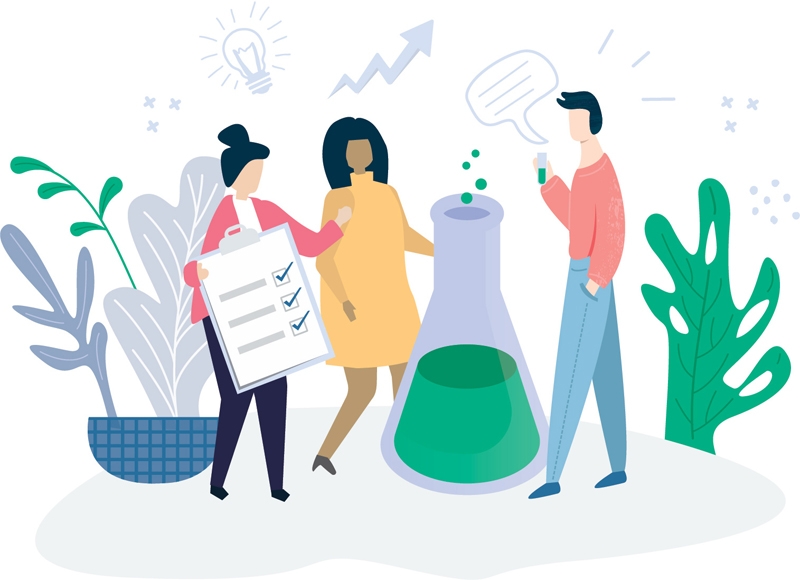After the adoption of the Bioeconomy Strategy in 2012, several Coordination and Support Actions (CSAs) have been funded and have produced a considerable amount of valuable knowledge and results.
LIFT will maximise the impact of these CSAs by valorising their outcomes and promoting the collaboration among CSAs in the following categories:
Raising public awareness is essential in order to ensure the development of a smart, sustainable and inclusive bioeconomy, to create a market for sustainable bio-based products and to promote more sustainable consumption and lifestyle patterns. (..). Public awareness actions are needed particularly on regional and local level where it could include prizes or awards as well as exhibitions also on the role of technology and science in the bioeconomy.
Education of school children and high school students is crucial to raise a generation that can understand the challenges and embrace the opportunities of a bioeconomy. At universities new curricula are already developed that combine for example life sciences, engineering and marketing. Vocational training needs to evolve also to match requirements for skills in primary production, manufacture, transport, and other relevant sectors.
Enhancing the awareness of stakeholders is crucial to the success of innovations. Co-creation is a process which ensures that multiple stakeholders can contribute ideas and concerns regarding the future. It aims to influence research agendas towards more citizen-oriented research and contributes to responsible policy making and strategic agenda setting.
Standards provide a basis for mutual understanding among individuals, businesses, public authorities and other kind of organisations. They facilitate communication, commerce, measurement/testing and manufacturing.
The 2018 Bioeconomy Strategy highlights the importance of regional bioeconomy strategies, of rural renaissance and of sustainable management of natural resources. Dedicated bioeconomy strategies or other policy initiatives exist or are being developed in many of the EU Member States and their regions. In particular in Central and Eastern and in South Europe there are many regions with a middle and low level of maturity of bioeconomy strategic planning and governance.
To increase the market uptake of the results of research & innovation (R&I) projects researchers in the fields of bioeconomy (such as food, agriculture, fisheries, and biotechnology) can benefit from different forms of coaching e.g. science communication and media training. Training support can be organised and delivered more cost-effective if provided to and shared between multiple R&I projects

Foresight is the disciplined exploration of alternative futures. Policy makers use foresight techniques and conduct studies to explore different scenarios in a structured way to confront complex challenges and help create a better future. A market analysis studies the attractiveness and the dynamics of a special market within a special industry. It is part of the industry analysis and thus in turn of the global environmental analysis. Through all of these analyses, the strengths, weaknesses, opportunities and threats of a company can be identified.
In the context of the development of the bioeconomy, the sustainable and reliable supply of non-food biomass feedstock is a critical success factor for the long-term perspective of biomass-based technologies to produce bio-based products on a large scale, while not competing with the food market and also benefiting the local rural communities.
Bioeconomy is a major opportunity for regional and local communities. Despite broad political agreement, the potential of many European regions to develop a thriving circular bio-based economy using their own resources remains largely untapped, New, sustainable technology options or business models suitable for local deployment are needed.
In open access research infrastructures interested parties can ‘shop’ for equipment and facilities they may need to carry out lab, test or pilot work. Recent European projects promote open innovation and access to open research infrastructure, either by informing about their existence, subsidising (SME) industries to use them, or brokering bio-based industries and downstream sectors.
A technology roadmap is a flexible planning technique to support strategic and long-range planning, by matching short-term and long-term goals with specific technology solutions. It is a plan that applies to a new product or process and may include using technology forecasting/technology scouting to identify suitable emerging technologies. Developing a roadmap has three major uses. It helps reach a consensus about a set of needs and the technologies required to satisfy those needs, it provides a mechanism to help forecast technology developments, and it provides a framework to help plan and coordinate technology developments. It may also be used as an analysis tool to map the development and emergence from new industries.